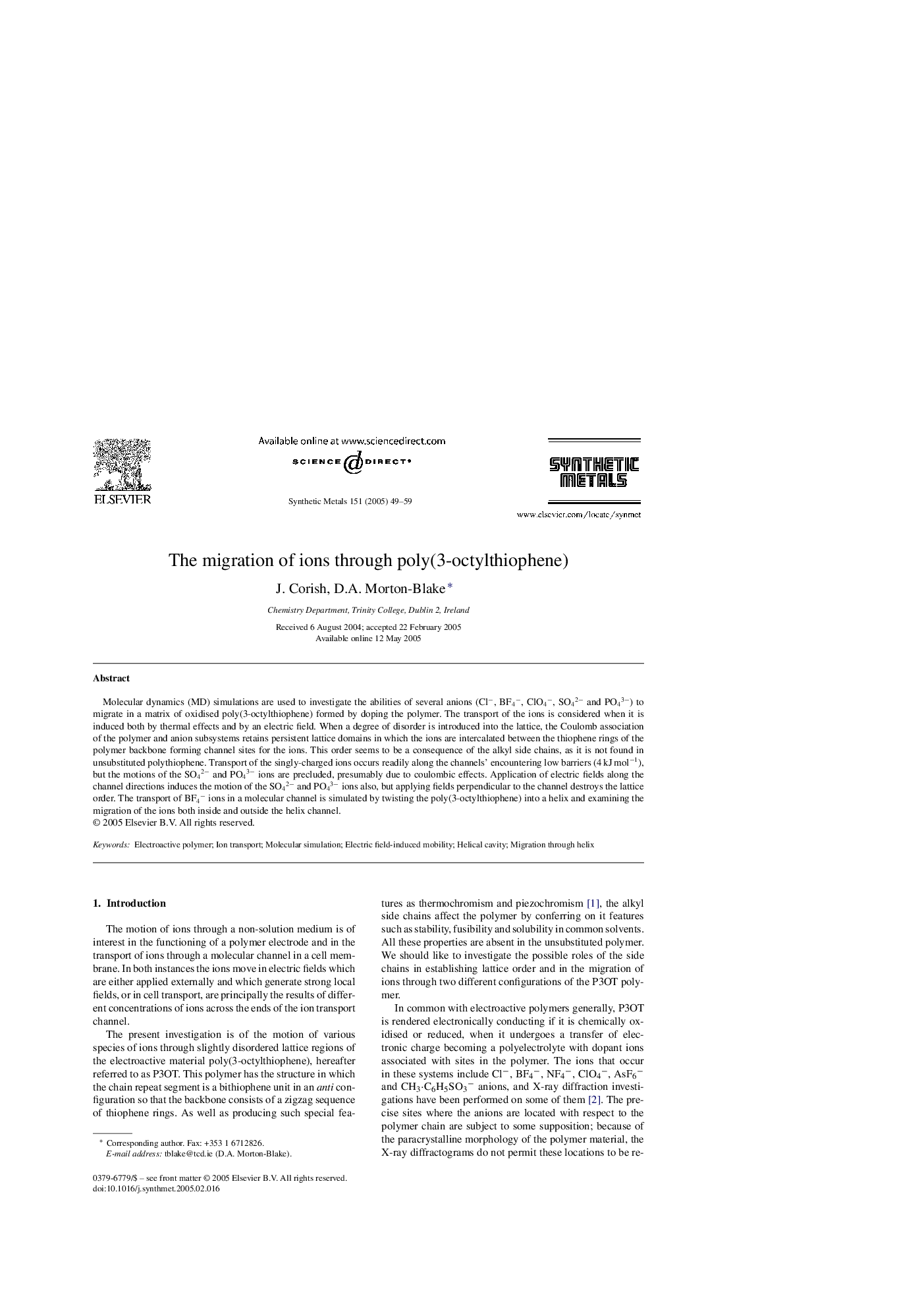| Article ID | Journal | Published Year | Pages | File Type |
|---|---|---|---|---|
| 10618909 | Synthetic Metals | 2005 | 11 Pages |
Abstract
Molecular dynamics (MD) simulations are used to investigate the abilities of several anions (Clâ, BF4â, ClO4â, SO42â and PO43â) to migrate in a matrix of oxidised poly(3-octylthiophene) formed by doping the polymer. The transport of the ions is considered when it is induced both by thermal effects and by an electric field. When a degree of disorder is introduced into the lattice, the Coulomb association of the polymer and anion subsystems retains persistent lattice domains in which the ions are intercalated between the thiophene rings of the polymer backbone forming channel sites for the ions. This order seems to be a consequence of the alkyl side chains, as it is not found in unsubstituted polythiophene. Transport of the singly-charged ions occurs readily along the channels' encountering low barriers (4Â kJÂ molâ1), but the motions of the SO42â and PO43â ions are precluded, presumably due to coulombic effects. Application of electric fields along the channel directions induces the motion of the SO42â and PO43â ions also, but applying fields perpendicular to the channel destroys the lattice order. The transport of BF4â ions in a molecular channel is simulated by twisting the poly(3-octylthiophene) into a helix and examining the migration of the ions both inside and outside the helix channel.
Related Topics
Physical Sciences and Engineering
Materials Science
Biomaterials
Authors
J. Corish, D.A. Morton-Blake,
